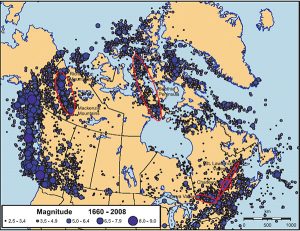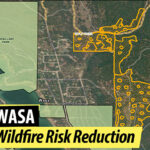Home »

B.C. invests in emergency mitigation and response
Disaster readiness remains a hot ticket item with the B.C. provincial government.
To better prepare British Columbians in the event of an emergency and ensure the basic needs of citizens are met, the provincial government is funding a series of collaborative projects to increase B.C.’s capacity and capabilities to mitigate and manage emergencies.
These one-time funding projects were made possible through Emergency Management BC’s operating budget and efficiencies realized in 2015-16 provincial budget over the course of the fiscal year.
The Province of British Columbia is committing $165,000 to the Fire Chiefs Association of British Columbia to create a database of emergency management and fire service resources in order to facilitate their rapid identification and deployment in emergency situations. This funding will also be used to deliver regional “Team Leader” courses in support of the Fire Training Standard, a provincial government press release outlined.

To aid the development of flood plain hazard mapping and modernize professional practice guidelines relating to flood assessments and align with a changing climate, the province is awarding $100,000 to the Association of Professional Engineers and Geoscientists of BC (APEGBC).
This standardized flood plain and hazard mapping will support the objectives of the new BC Disaster Mitigation Program by enabling analysis and data comparison in different flood locations and improve the identification of risks, vulnerabilities and priorities for mitigation.
The province has also contributed $25,000 to support a collaborative research project between EMBC, the Global Earthquake Model Foundation (GEM) and the Earth Sciences Sector of Natural Resources Canada to conduct earthquake risk assessments. The outcomes of these risk assessments will provide vital information to address the needs and operational requirements for earthquake events and earthquake risk reduction planning in British Columbia. These actions support the Renteria report to enhance catastrophic earthquake preparedness in B.C.
“Emergency Management BC is responsible to British Columbians for leading the management of provincial-level emergencies and disasters and supporting other authorities within their areas of jurisdiction. The funding of programs like these helps minimize loss of life and suffering by protecting health, property, infrastructure and the environment – and will ultimately limit economic loss and social impacts,” stated Minister of State for Emergency Preparedness Naomi Yamamoto.
 Earthquakes are the largest risk to B.C. More than 3.5 million people (80% of the B.C. population) are likely to experience a damaging earthquake in the next 50 years, a Ministry of Transportation and Infrastructure and Emergency Management BC press release related.
Earthquakes are the largest risk to B.C. More than 3.5 million people (80% of the B.C. population) are likely to experience a damaging earthquake in the next 50 years, a Ministry of Transportation and Infrastructure and Emergency Management BC press release related.
The Global Earthquake Model Foundation is an international not-for-profit and consortia of researchers which leads a global effort to develop an open source, best practice methodology for earthquake risk assessment in the public domain.
The APEGBC is the licensing and regulatory body responsible for B.C.’s professional engineers. The association has a professional mandate to protect the public safety of B.C. by setting and maintaining standards of professional practice and ethical conduct for its members and licensees.
The East Kootenay is rated by National Resources Canada as being in the second lowest ‘relative hazard’ category for earthquakes. The Lower Mainland and Vancouver Island are rated in the top two ‘high’ hazard categories.
BC Earthquake Immediate Response Plan.
e-KNOW







